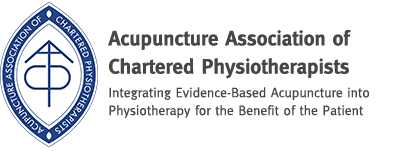With Wimbledon in full swing, it’s a great time to talk about Lateral Epicondylitis, or, as it is more commonly known, Tennis Elbow.
Getting to Grips with Tennis Elbow
What is Tennis Elbow?
Lateral Epicondylitis or Tennis Elbow is a strain or in its worse form a slight tearing of the attachment of the forearm muscles into the outside part of the elbow.
Symptoms
Tennis elbow pain can cause intermittent or constant pain ranging from mild discomfort to excruciating pain, limiting your movement and function. There can sometimes also be swelling, stiffness and very commonly local tenderness in the elbow.
Causes
Tennis Elbow is usually caused by repeated gripping and repetitive movement of the fingers, hand or wrist, or a combination of all three movements causing a Repetitive Strain Injury (RSI), but can also be caused by direct impact injury to the elbow.
Tennis Elbow is actually one of the most common RSI’s in the workplace, both in office and manual workers.
Gripping sports such as weight training, and of course racquet sports such as tennis, badminton and squash can also cause the condition to develop.
There is usually also some mechanical link with the tightening up of the neck, shoulders, and upper back muscles that then can make the arm tight, contributing to the development of the condition.
Self-Management Advice
Try not to work through the pain, or create significant pain during or after completing your activity. If you do you will just irritate your tennis elbow and may make the condition worsen.
Try and work out the aggravating factors, such as keyboard and wrist position, how you grip equipment, how long you can do things without aggravating the elbow – and then try and modify the activity. The phrase ‘No Pain No Gain’ doesn’t really apply during or after!
Look at your ergonomics, this is the position you work in. It could be the ergonomic relationship between your chair and your keyboard or mouse. Take regular breaks from your work station. It could be the handle you are gripping is too narrow, the smaller/tighter the grip, the worse it typically is. So you can pad your handle up on your tennis racquet, trowel or shovel, for example, to make the grip wider.
Apply intermittent hot or cold to the painful area.
Use pain relief and NSAID’s (please seek advice from your GP or Pharmacist). This helps reduce any swelling, therefore reducing pain, tension and irritability.
Do regular stretches from the neck, shoulders, elbow, wrist and hand.
Try strengthening exercises to re-teach the elbow in a ‘controlled’ way so you exercise the elbow and start to rebuild it, hopefully without creating too much discomfort during or after the exercise. If you do experience discomfort you must reduce the exercise or stretch but not necessarily stop. Avoidance usually achieves very little.
Other Treatment Options
If your symptoms are ongoing after trying to improve with self-management advice above then you may have to consider seeing a physiotherapist via your GP or privately for assessment and treatment consisting of:
Manual Therapy: working with the hands to release the arm tightness and mobilise the joint.
Acupuncture: There is some evidence to support the use of acupuncture. Find out more
Shockwave Therapy: There is more and more evidence to support the use of this treatment. Find out more
Steroid Injection: Can achieve some good short term effects, but you would still need to apply good self- management strategies as above. Find out more
Surgery: A very, very last resort for very chronic (long term) irritable conditions.
Always apply the self-management advice above if you do receive any of these treatment options.
It’s always worth getting an assessment and advice to confirm the diagnosis from a qualified clinician and to talk through your self-management, treatment and any functional and ergonomic issues.
Working out the causes and aggravating factors, whether they be sport at home or at work, can help with a plan of action.
For more advice on Getting to Grips with Tennis Elbow, please contact Central Physio here
Blog compiled by Kevin Huffington, Clinical Director at Central Health






